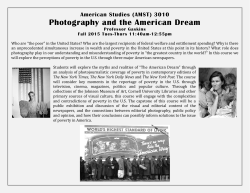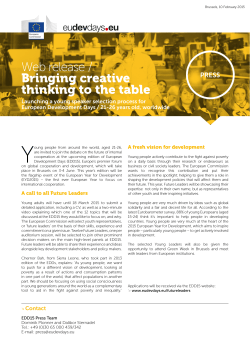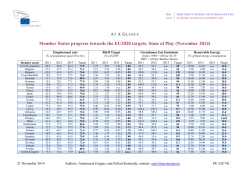
Medical-Legal Partnerships - Kennedy Krieger Institute
Medical-Legal Partnerships: The Impact of Educational Advocacy Carrie Schiel, MS, CCC-SLP; Maureen van Stone, JD, MS; Christopher Smith, PhD Background of Medical-Legal Partnerships Addressing Individual Needs • The first medical-legal partnership (MLP) was established in the United States in 1993 at Boston Medical Center by a pediatrician and a part-time attorney. • Due to medical and technological advances, individuals with complex neurodevelopmental and physical disabilities are living longer and higher-quality lives. • The goal was to improve the treatment outcomes and wellbeing of low-income patients who, because of one or many social determinants (i.e., substandard housing, inconsistent access to nutritious food and necessary medication, unsafe physical/emotional settings), were failing to remain healthy. • By federal law, U.S. public schools are required to provide every student with access to a public education. For students with qualifying disabilities under federal and state laws, the provision of a free appropriate public education (FAPE) is an ever-present and sometimes contentious issue. • The initial MLP model has been replicated in 262 healthcare facilities across 36 states. • Children with disabilities in families who are dealing with social determinants of health, such as poverty and language barriers, may experience challenges with accessing programs and services that are critical to their health, education, and psychosocial functioning. • The question: If the need for MLPs is so great as to warrant a response like this in the healthcare community, how are needs impacted by similar determinants being addressed in the education community? Background of Poverty in Schools • Although poverty rates differ slightly depending on the definitions used to measure them, general and reliable trends have emerged. • The National Center for Educational Statistics reports that in 2012, approximately 11.1 million school-age children (5 to 17 years old) were in families living in poverty. • The percentage of school-age children living in poverty in 2012 (21 percent) was higher than it was two decades earlier in 1990 (17 percent). Percentage of U.S. Children in Poverty by Race/Ethnicity in 2012 40% 40% 30% 30% • Using an expert familiar with the jargon and bureaucracy of the education, medical, and legal systems may help families achieve a more desirable outcome with a less adversarial approach (i.e., avoiding costly and time-consuming litigation). How it Works 10% 10% Black Hispanic Asian Black Hispanic Asian White White Percentage of U.S. Children in Poverty by Citizenship Status in 2012 28% 28% Outcomes Increased Compensatory understanding services for of parental children rights Implementing appropriate clinical recommendations Additional Appropriate services and educational supports programs and placements • The following quote was provided by opposing counsel in a special education matter: “When Individualized Education Program team members work with the MLP attorney, they do not feel ‘under attack’ and are more willing to work collaboratively, which expedites and simplifies cases.” • Bridging the medical and educational communities facilitates easy access to necessary paperwork, clinical evaluations, and input from off-site team members (e.g., physicians, clinicians, social workers) that may have otherwise been entrenched in bureaucracy. • Students, parents, educators, opposing counsel, and school districts can benefit from continued and expanded work with MLPs to address social injustice and increase student access to the educational rights afforded them. • Project HEAL (Health, Education, Advocacy, and Law), a community-based program of the Maryland Center for Developmental Disabilities at Kennedy Krieger Institute, is an example of an MLP that focuses primarily on educational matters. • Opposing counsel in a special education matter also stated, “Knowing that the MLP attorney who represents the child (not the parent) has the same goal as the IEP team, which is to ensure the student receives FAPE, cultivates trust and collaboration among all parties involved in the IEP process.” • Project HEAL attorneys represent children with disabilities from low-income families in matters specifically related to their disability (e.g., special education disputes, Social Security Income appeals, and simple family law matters). References • Following the initial referral, which is usually from a healthcare professional within the medical institution, a Project HEAL staff member completes a client intake and determines what type of service is needed (e.g., representation, limited representation, or pro bono referral). 20% 20% 0% 0% • Some families turn to attorneys, advocates, or educational consultants to address disagreements regarding educational programs and placements. However, not all individuals in these professions have expertise in special education or healthcare laws. of some children with disabilities through consultation with healthcare professionals; and the Project HEAL attorney serves as a bridge between the healthcare professionals and the school staff. • Representation is provided on a sliding-fee scale based on household size and income. If the family can afford the flat fee, the Project HEAL attorney represents the child and zealously advocates for the implementation of the healthcare professional’s clinical recommendations. Children Living in Poverty. (2015, January 12). Retrieved from National Center for Education Statistics: http://nces.ed.gov/ programs/coe/indicator_cce.asp Mission and History. (2015, January 12). Retrieved from Medical Legal Partnership Boston: http://www.mlpboston.org/ about-us/mission-and-history Poverty in the United States-FAQs. (2015, January 12). Retrieved from National Poverty Center: http://www.npc. umich.edu/poverty/#5 United States Census Bureau. (2015, January 12). Retrieved from Poverty 2013 Highlights: https://www.census.gov/hhes/ www/poverty/about/overview/#1 • If a family is unable to pay the flat fee, the MLP attorneys provide limited representation to the family or make a pro bono referral to one of the law firm partners. Benefits 14% 14% 7% 7% 0% 0% Native born Native citizens born citizens Foreign Foreign born born Foreign Foreign citizens non-citizens born born citizens non-citizens • By using these methods of representation, Project HEAL attorneys specializing in education matters have resolved many cases, resulting in positive outcomes. For example, parents increase their knowledge about their child’s educational rights; children gain access to appropriate programs and placements; children receive compensatory services when their rights have been violated; school systems implement needed clinical recommendations with a better understanding of how those recommendations will benefit the child in the school setting; school systems gain a better understanding of how to meet the complex needs For more information, visit our website at mcdd.kennedykrieger.org.
© Copyright 2025










